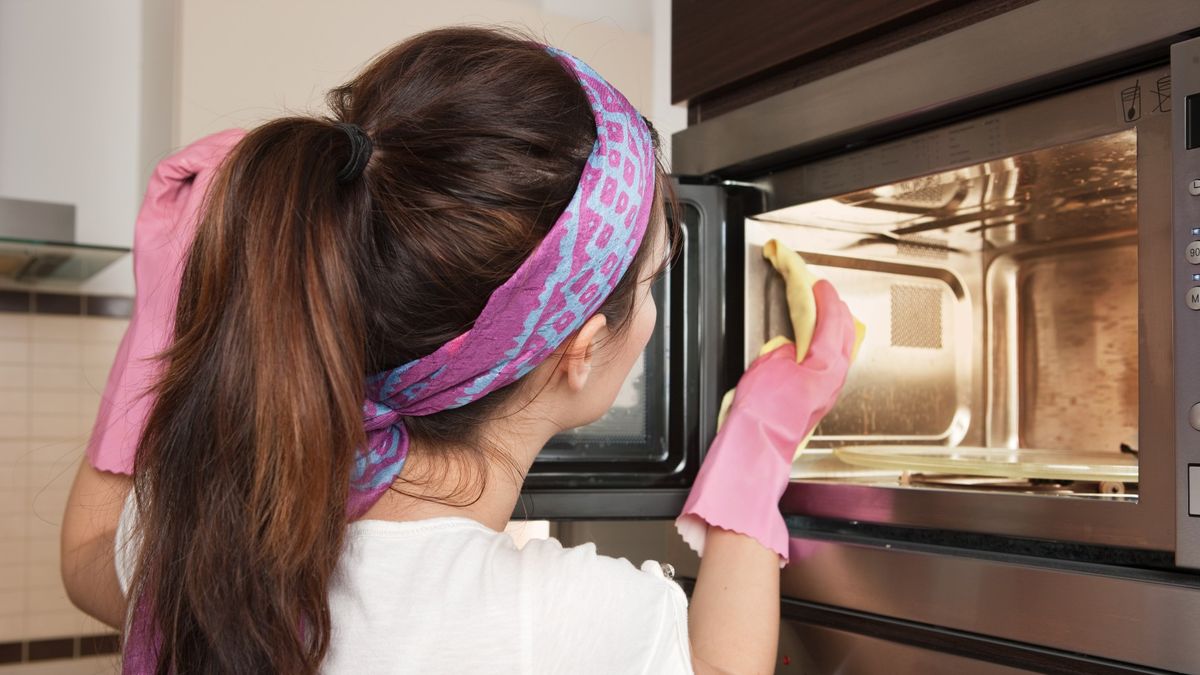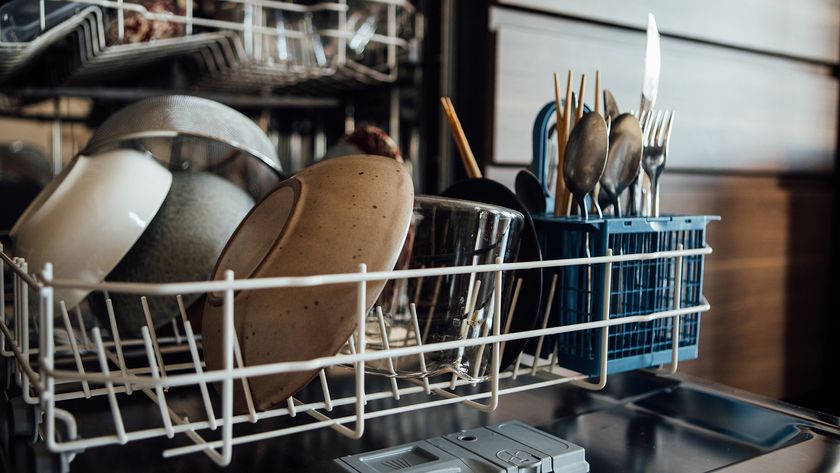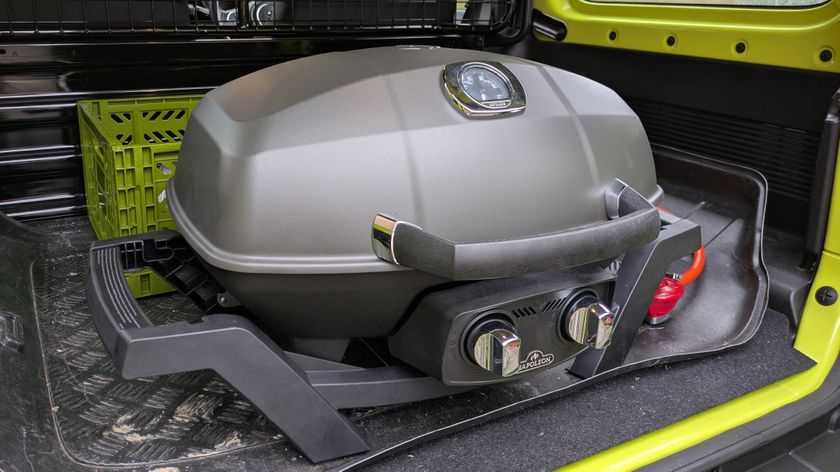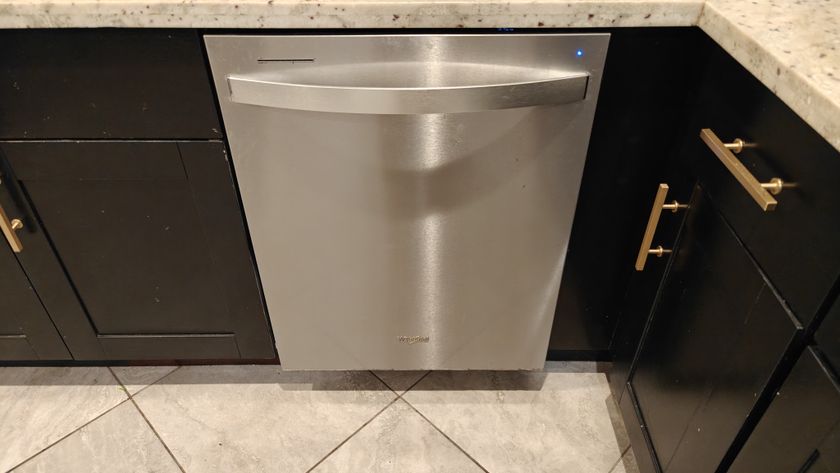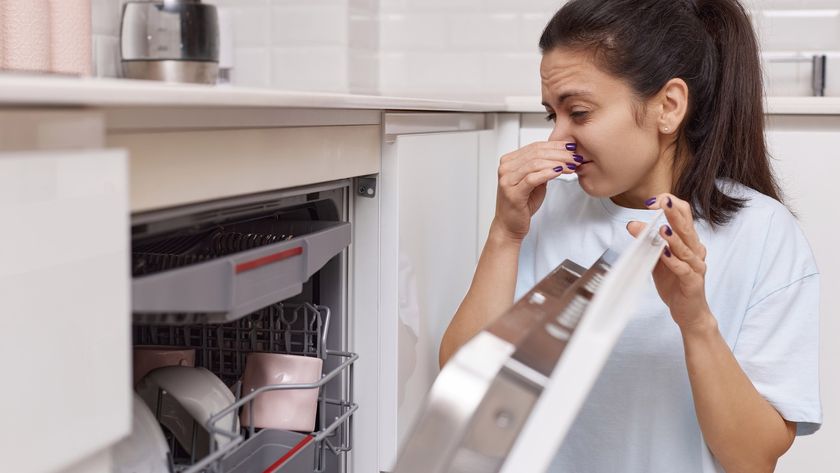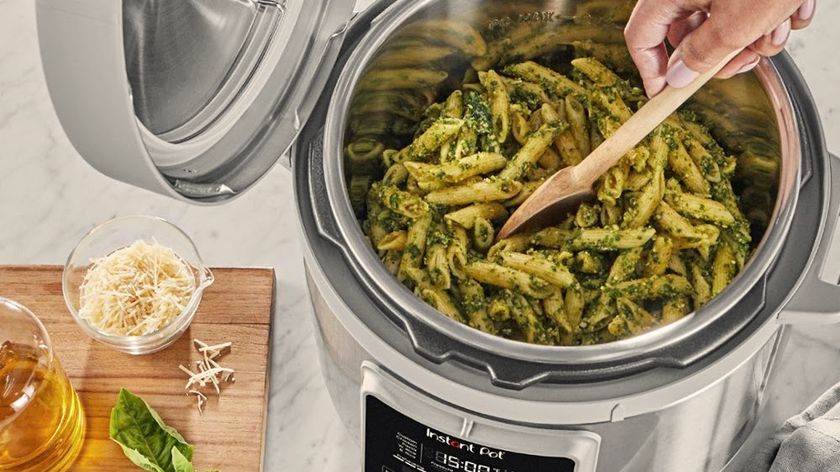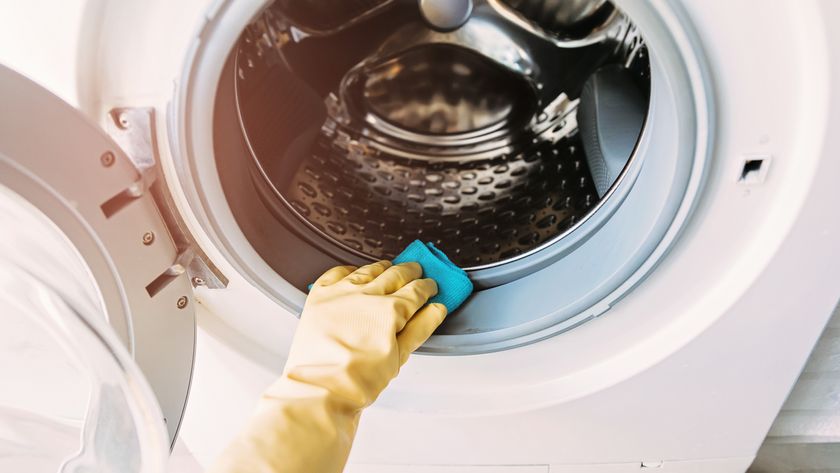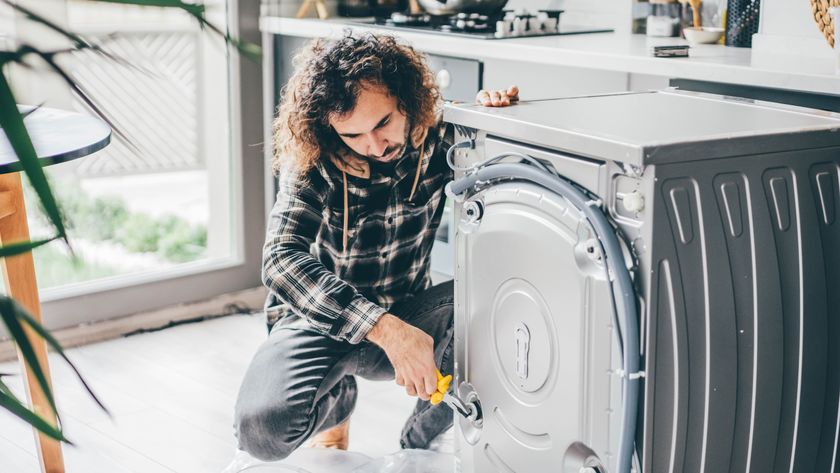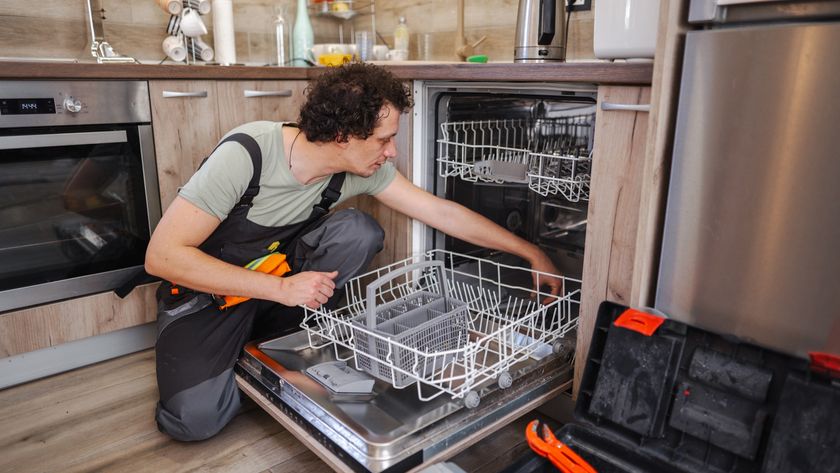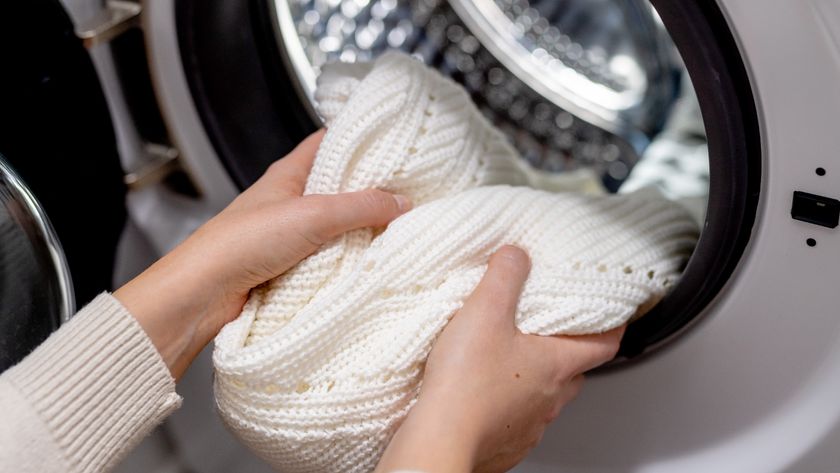The best way to keep your microwave oven in great shape is to learn how to clean it. We don't think it's fun, but knowing how to do it properly is important. Sure, unless your bowl of tomato soup erupts and paints the roof of your microwave red, you might not think about it all that often. Who has time to wipe it down after every use?
Additionally, even though over-the-range microwaves are becoming more popular, most of us still have countertop microwaves, so it's hard to see if they're in good shape. Most of us only peek inside when a volcanic eruption happens to see what else might be hiding inside.
There's nothing complicated about how to clean a microwave oven. So whether you're a cleaning pro looking for new tips or a novice looking to get the most out of your microwave, we've got you covered. This guide offers handy advice on how to get the inside sparkling clean, get rid of unpleasant odors, and make the door so bright you'll see yourself.
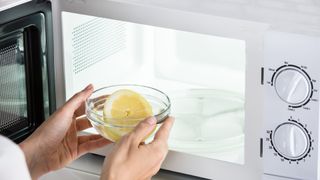
How to clean the inside of a microwave
Whether you have a spacious microwave or a space-saving compact microwave, we’re big fans of natural cleaning. While plenty of supermarket cleaning products cut through grease and grime and remove stains, they’re not always kind to your health or the environment. They can be particularly problematic for those with asthma or other respiratory conditions.
Here's how to clean a microwave with lemon and vinegar for a natural solution that won’t harm you or your microwave.
Step 1
In a microwave-safe bowl, combine a cup of water with a lemon, lime, or orange juice. Then, chop the fruit into slices and add those to the water. You can do this the other way around, too, but we found squeezing juice out of a whole piece of fruit easier than from individual slices.
Step 2
Add two tablespoons of white wine vinegar or apple cider vinegar. If you don’t have any to hand, don’t worry; the citrus mixture will still work well. The vinegar just makes it more potent.
Step 3
Place the bowl inside the microwave and turn it on high power for several minutes until you can see the mixture boiling and the window steaming up.
Step 4
Let the microwave cool for five minutes before opening the door and removing the bowl. Wipe the inside with a clean sponge and marvel at the magic of citrus fruit.
Step 5
If you don’t have citrus or vinegar, try some wet paper towels. Soak the towels, place them inside your microwave, and run them high for five minutes. The steam from the towels will soften any baked-on food, and then you can wipe it right off with the wet towels. Cleaning a microwave from the inside out doesn’t get easier than this.

How to clean a microwave door
Step 1
Prepare a natural cleaning solution using vinegar, baking soda, or lemon juice. For example, combine two tablespoons of lemon juice, one cup of vinegar, and one cup of water in a microwave-safe bowl. A small microwave-safe dish filled with water can also be filled with baking soda.
Step 2
Put the bowl of cleaning solution in the microwave for 2 to 5 minutes. This will fill the microwave with steam, which will help loosen any stuck-on food. Let the dish cool before removing it.
Step 3
Open the microwave and use a scrubbing brush or damp sponge to clean the inside of the door. Be sure to get into all the nooks and crannies to remove any dried-on food. If stubborn stains remain, make a baking soda and water paste and spread it across the door. Let it sit for a few hours, then wipe it clean.
Step 4
Wipe down the outside of the microwave with a clean cloth or sponge. For grease buildup, use an all-purpose grease-cutting cleaner or a sudsy mix of dish soap and water. If you have smudges on the exterior windows, use vinegar and water mixed 50/50.
Step 5
After cleaning, clean the inside and outside of the microwave door. This will prevent streaks and keep your microwave door sparkling. Keeping the microwave door clean will also prevent dirt and grime from building up.
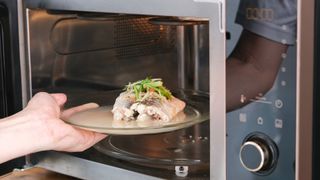
How to clean a smelly microwave
We love salmon as much as the next person, but that stinky fish smell? Yeah, not so much. Strong-smelling foods such as fish, eggs, and cruciferous vegetables can leave a pungent odor throughout your home, and there’s nothing worse than when it’s still hanging around the next day.
Thankfully, we have some super tips that’ll let you enjoy those seafood and curry dinners without any of the morning-after-odor regrets:
- For light odors (spicy foods are a good example), place a bowl of baking soda inside your microwave, close the door, and leave it overnight. Baking soda is an excellent absorber of odors and a potent neutralizer, making it a great choice to eliminate those after-dinner smells.
- If you don’t want to wait, try filling a bowl with warm water, dish soap, and baking soda. Put the bowl in the microwave for one minute until it starts to steam, then turn off and leave the hot water mixture to work its magic. For a natural solution, replace the dish soap with a half lemon and a few rosemary sprigs.
- Coffee is another fantastic option for light odors. Put two tablespoons of ground coffee in a microwave-safe mug with half a cup of water. Heat the mug for 2-10 minutes, making sure the coffee doesn’t boil, as this makes it less effective. You can do this in bursts or set your microwave to medium heat. Add baking soda and coffee to a bowl for an even stronger mix, and let it sit in the microwave overnight.
- For heavy-duty odors (burnt foods and salmon), place a natural and non-toxic odor-absorbing gel inside and leave it there until you next use your microwave. We like the Fresh Wave Odor Removing Gel, $24.99 at Amazon. Another great alternative is charcoal, which absorbs heavy odors. Add cut pieces of charcoal to a bowl and leave them in your microwave overnight with the door shut.
While many of us are guilty of waiting until our microwaves smell bad before we do something about it, the best way to avoid odors and ensure your microwave is always fresh is to give it a light clean once a week.
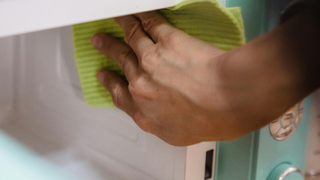
How to clean a stained microwave
Step 1
Add 1 cup of water to a microwave-safe bowl, and add either ¼ cup of vinegar, two to three tablespoons of baking soda, or two halves of a lemon.
Step 2
Microwave the bowl on high for five minutes or until you have a rolling boil.
Step 3
Turn the microwave off and leave the door closed for ten minutes to allow the water to cool down.
Step 4
Open the door, remove the rotating tray if there is one, and wipe the microwave down. The steam should have attacked the stains, making them easy to remove.
Step 5
If the stains are still visible after you’ve wiped all the surfaces, scrub gently with the warm water solution. If they don’t budge, make a paste with water and baking soda. Apply the paste to the stains and let it sit for 30 minutes before wiping it clean with a damp cloth. While it can be tempting to attack the stains with bleach, try resit. The strength of the chemicals in bleach can weaken the microwave and cause damage over the long run.
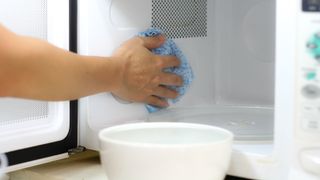
How to clean a microwave filter
Step 1
Before you start, ensure the microwave is unplugged for safety. Locate the filter under it and remove it carefully.
Step 2
If it's a grease filter, it may be covered in grime and grease. If it's a charcoal filter, it may need replacing if it's old or dirty.
Step 3
Stainless steel mesh filters should be soaked in hot water and dish soap to break down tough grease and grime. Depending on how you cook, you should replace your charcoal filter every four to six months.
Step 4
Clean the filter with an old toothbrush or coarse dish sponge to remove any grease and particles stuck on it. Don't scrub too hard to bend the filter. After scrubbing, wash the filter thoroughly under warm running water to remove soap residues.
Step 5
When the filter is clean, let it dry completely before reinserting it into the microwave. This prevents water from dripping into your microwave or stove.
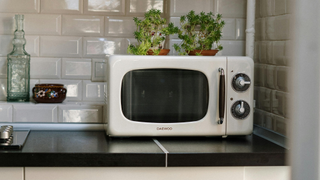
How to clean the outside of a microwave
Step 1
Vinegar, baking soda, or lemon juice can be used to create a cleaning solution. For example, combine 2 tablespoons of baking soda or lemon juice with 1 cup of water in a microwave-safe bowl.
Step 2
Dip a soft cloth or sponge into the cleaning solution and wring out any excess liquid. Gently wipe the outside of the microwave, paying extra attention to grease or grime spots. For stubborn stains, you might have to let the solution sit on the surface for a few minutes before wiping it off.
Step 3
If the stains or grime are still stubborn, use a soft scrubbing brush or old toothbrush to scrub the area gently. Be careful not to scratch the microwave surface. For tougher stains, you can also use baking soda and water paste.
Step 4
After cleaning, rinse the cloth or sponge with clean water and wipe the microwave to remove any residue from the cleaning solution.
Step 5
Finally, buff the microwave's surface with a dry microfiber cloth to give it a nice shine and ensure there are no water spots or streaks. By cleaning your microwave regularly, you can keep it looking good and working well.
How to keep a microwave clean: our top tips
We understand how busy life can get and how easy it can be for those annoying cleaning jobs to get put on the back burner, so here are some final tips to help you keep your microwave looking clean and smelling fresh for longer:
- Even if you’re only heating something briefly, always cover food with a plate or microwave-safe cover. This will prevent foods from splattering or bubbling over.
- Avoid microwaving any food with a high grease content, such as bacon, or those prone to exploding, like eggs, as these are primary culprits when it comes to creating a mess.
- Give your microwave a quick wipe when cleaning your countertop. Little and often is an easier cleaning method than waiting until it becomes a big job.
FAQs
Can you clean a microwave with dish soap?
Dish soap is a great way to clean the microwave. It's cheap and eco-friendly compared to chemical cleaning agents. Dish soap is a mild detergent safe for most surfaces, including microwaves.
Do you have to clean a microwave before first use?
Cleaning a microwave before use is critical to remove residual dust, manufacturing debris, or packaging materials. Take off any packaging materials, stickers, or debris that came with the microwave. Mix some mild dishwashing detergent with warm water in a bowl. Mix well.
Make sure to cover every section inside the microwave's interior, including the ceiling. Don't scrub deep inside the microwave's vents. Clean the exterior of the microwave with a soapy water solution. Avoid abrasive cleaners or harsh chemicals as they'll damage it.
Before heating any food, test the microwave by placing a microwave-safe cup of water inside and running it for 1-2 minutes. Check if the water is hot after that.
Before cleaning your microwave for the first time, read the manufacturer's instructions carefully and follow any specific cleaning instructions provided.
Is it safe to clean a microwave with bleach?
Bleach is a common household cleaner, but it is not recommended for cleaning microwaves. Bleach fumes damage microwave internal components and microwaves shouldn't be cleaned with harsh or abrasive cleaners, including bleach. Furthermore, bleach can make microwave plastic brittle.
While bleach is a powerful disinfectant, it doesn't kill bacteria as effectively as other methods.
If bleach residues stay in the microwave, they could contact food. Even if bleach is properly rinsed out, it could leave an odor that affects the food's taste.
Instead of bleach, use vinegar, lemon juice, or baking soda mixed with water. Heating this mixture in the microwave can help remove odors and loosen food residues, making cleaning easy.
